There are some things you should know before buying battery-powered yard tools. The tool's design, from the type of electric motor to the size of the battery, affects not only its price, but its operation. We contacted the yard tool experts at Toro to get their best buying tips so you can make the best tool choices for your yard.
10 Things You Should Know Before Buying a Battery-Powered Yard Tool
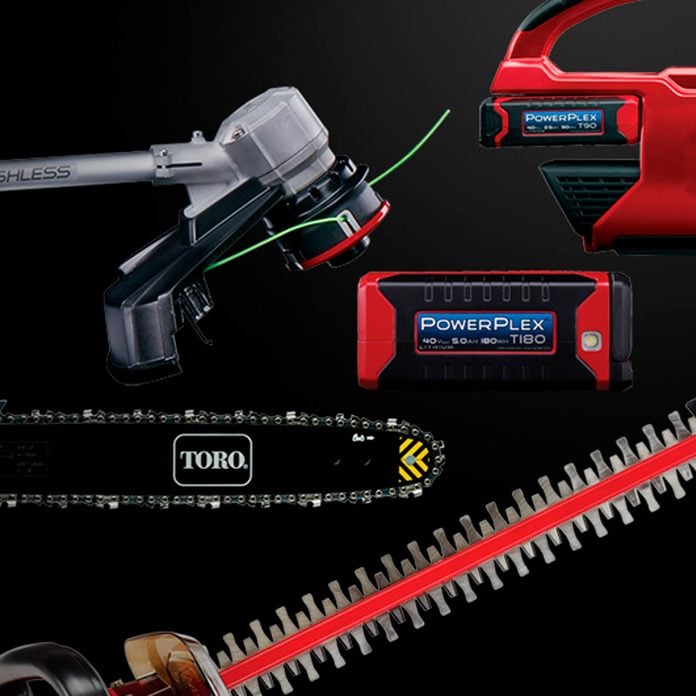
Simplicity
Battery-powered yard tools can do the same job as many electric and gas-powered yard tools while eliminating extension cord wrangling and gas, oil and annual tune ups. They’re not only powerful enough, but the batteries last long enough for the most common yard tasks. Plus, battery-powered yard tools are far more reliable than any gasoline engine. Just plug in a fresh battery, press the start button and you’re off and running.
Photo: The Toro Company
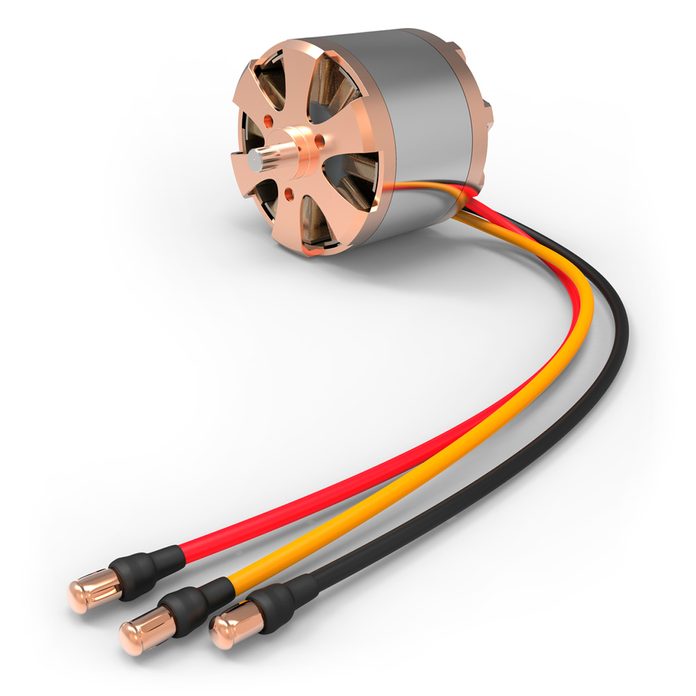
Know Your Motors
Battery-powered yard tools can be equipped with either a “brushed” or “brushless” -style electric motor. Brushed motors cost less so they’re often used in economy tools where a low selling price is critical. Brushed motors are also less energy efficient than brushless versions, so they’re not a good fit for tools that must handle heavy loads or run for long periods because they’ll drain the battery faster. But that doesn’t mean you should rule them out completely. Brushed-motor hedge and edge trimmers save money and work just fine for maintaining smaller yards. Due to the shorter run times and lighter loads, the battery can easily last through the job.
However, that’s not the case with leaf blowers and chain saws. They’re typically run for longer periods at higher speeds. For those tools you’ll want a brushless-motor tool and a large battery—you don’t want to run out of power in the middle of a tree trimming or leaf wrangling project.
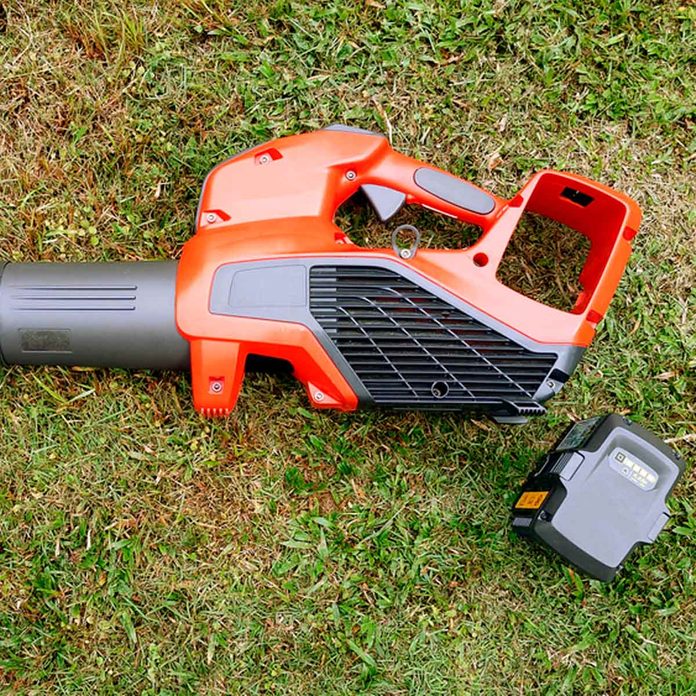
Understanding Electric Motor Power Usage
You’ll find battery-powered yard tools with 18-, 24-, 36-, 40-, 56- and even 80-volt batteries. You may think that a higher voltage battery automatically translates to more power. That’s true in some cases, but not always. In fact, a well-designed tool with a 40-volt battery can match the power of an 80-volt tool, so you can’t rely on battery voltage alone to judge a tool’s suitability.
The true measure of a battery-powered yard tool’s efficiency is its wattage. To calculate wattage simply multiply volts times amps. Here’s how that applies to battery-powered yard tools. If you think of volts as pressure (psi) and amps as volume (gallons), then multiplying volts (pressure) times amps (volume) gives you the number of “gallons” at a set pressure (volts). So a tool with a higher wattage rating uses more power than a comparable tool with a lower wattage rating.
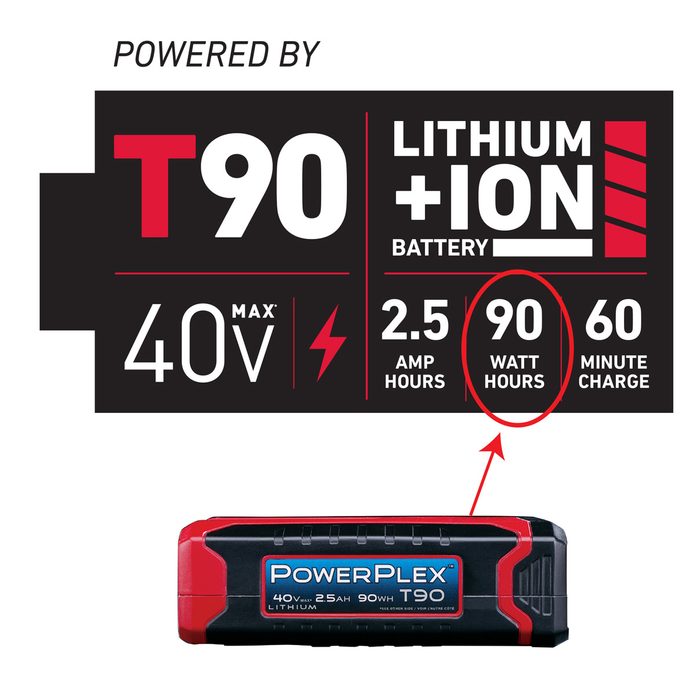
Understanding Battery Capacity
The electrical storage capacity of a battery is rated in amp-hours. An amp-hour rating gives you an idea how long a battery can continuously output a set number of amps. A 5-amp-hour battery, for example, will discharge 5 amps continuously for one hour. If you run the yard tool at a higher speed or higher load that draws more than 5 amps, the battery will discharge faster.
But a battery’s amp-hour rating alone doesn’t give you an indication of how much total power the tool can deliver. That’s why you also need to compare the battery’s watt-hour rating (volts x amp-hours). Some manufacturers list the watt-hour rating, but many don’t. Here’s an example of two similarly sized batteries based on amp-hours.
The 40-volt Toro PowerPlex T90 battery has a 2.5 amp-hour 90 watt-hour rating. Another manufacturer provides an 18-volt 2.0 amp-hour battery with a 36 watt-hour rating. Even though the batteries have similar amp-hour ratings (2.0 and 2.5), their watt-hour ratings are very different (90 versus 36). If you’re comparing batteries, make sure you compare watt-hour ratings instead of just amp-hours. Life hack: How to double the life of your lithium ion batteries.
Photo: The Toro Company, Rick Muscoplat
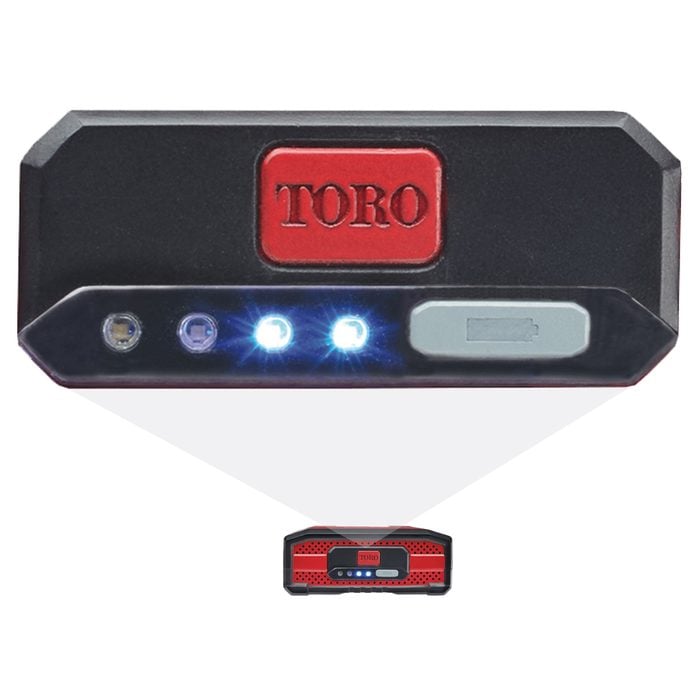
About Those Battery Power Indicators
Many lithium batteries come equipped with a series of lights that indicate remaining battery power. They’re an invaluable aid to let you know whether you’ve got enough power to finish the job or start a new one. The indicators are fairly accurate, but they’re not foolproof. That’s because lithium batteries don’t discharge like older nickel–cadmium (NiCad ) or nickel metal hybrid (Ni–MH) batteries. Those batteries discharged slower and slower until they finally conked out. So you could “milk” that last little bit of power out of them to finish the job. Lithium batteries, on the other hand, output power at a fairly steady rate until battery voltage reaches a pre-set cutoff point, and then the battery shuts off completely. So be warned; if you start a job with less than 1/4-power left on the battery, your yard tool will probably shut down sooner than you think. Once it’s shut down, you’re out of business.
Photo: The Toro Company, Rick Muscoplat

What’s the Deal With Battery Run Time?
The most common complaint from battery-powered yard tool owners is that the battery doesn’t last as long as advertised. Most manufacturers publish run times based on the tool on the lowest speed. If you run the tool at a higher speed, you simply won’t get the advertised run time.
Here are some rules of thumb for managing battery run time:
• Many homeowners run their leaf blower at top speed to move leaves and clean sidewalks and driveways. You don’t always need that higher speed to get the job done. You’ll get longer run times if you buy a leaf blower with several speeds and a power boost button. Run the tool at the lowest speed and use the higher speed or power boost only as needed.
• String trimmers and hedge trimmers can run at the lowest speed when trimming weekly growth. But if you let the growth get out of hand, don’t be surprised if your battery discharges faster due to the heavier load.
• Battery-powered chain saws can usually handle felling and cutting up small trees and shrubs on a single charge as long as you cut slowly. However, if you try to cut too fast, you’ll overload the motor and discharge the battery faster.
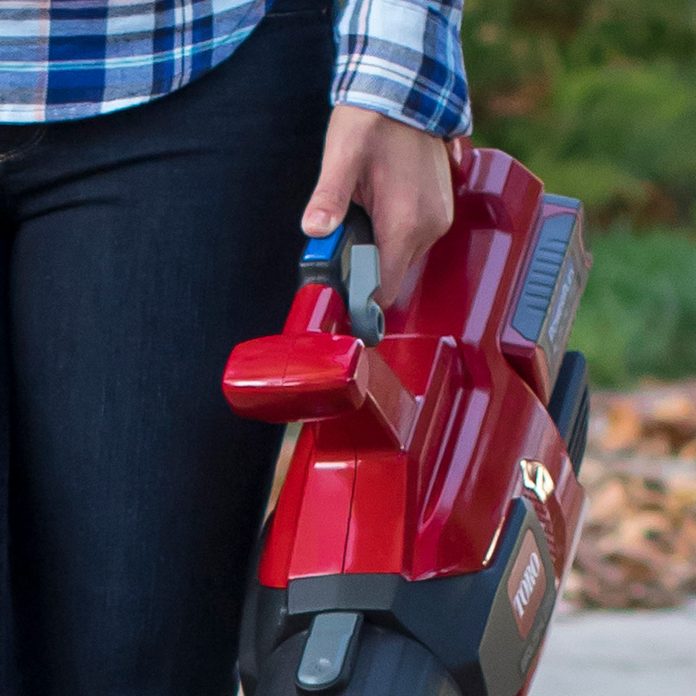
Which Speed Button Setup is Best?
Battery-powered yard tools are available with several speed options.
• Multiple speeds that you control from the trigger or push button control panel
• Infinitely variable speed that you control from the trigger or with a speed dial
• Boost mode that provides maximum power as long as you depress the “Boost” button
Infinitely variable speed may seem like the best choice because it allows you to fine tune the speed to get maximum battery run time. In reality, most users find it a nuisance. The truth is, few projects require that degree of speed control. If you’re considering a tool with trigger-controlled variable speed, make sure it’s equipped with a “cruise-control” trigger lock so you can release the trigger and still maintain the speed. Otherwise, choose a multiple-speed unit with boost mode.
Photo: The Toro Company
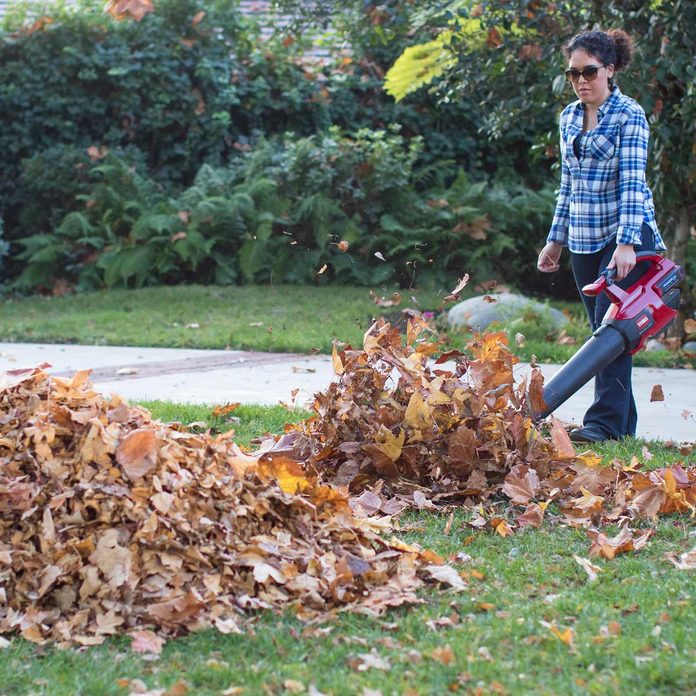
For Leaf Blowers, It’s All About MPH and CFM
Leaf blower buyers get really confused by air velocity and air volume specifications. They wonder which is more important—miles per hour (MPH) or cubic feet per minute (CFM)? When it comes to lifting and moving leaves, MPH alone isn’t a reliable indicator of the leaf blower’s abilities. That’s because MPH is directly related to the tool’s nozzle size. So a blower can easily achieve a high 300-MPH rating, but have a very small nozzle opening. That may be great for blowing out the cracks in your driveway, but the blower sure won’t round up many leaves.
You need high air velocity (MPH) to lift leaves off your lawn and out of flower beds. But you need a high CFM and MPH rating to round up piles of leaves. So, the best leaf blowers have the highest CFM and MPH rating, along with multiple nozzles. Here are 14 tips for dealing with leaves like a pro.
Photo: The Toro Company
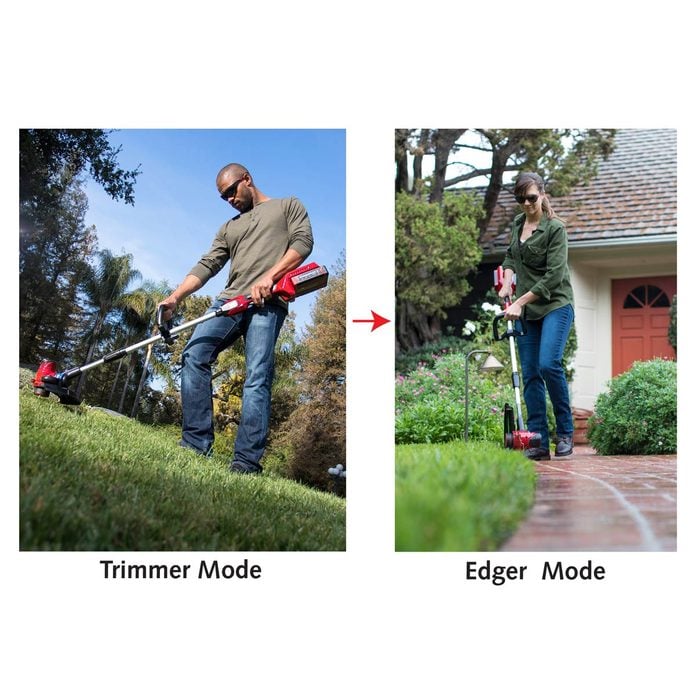
Edger/Trimmers Offer the Best of Both Worlds
You can turn any string trimmer into an edger simply by rotating the tool 90°. That trick works if you have a short sidewalk. But holding the handle in that position for a long time can be hard on your wrists. That’s where a dual-mode edger/trimmer unit comes in handy. Use the head in the horizontal position for trimming around your foundation, fence and gardens. Then rotate the head 90° and edge a long walk and driveway while holding the handle in its normal position.
Photo: The Toro Company, Rick Muscoplat
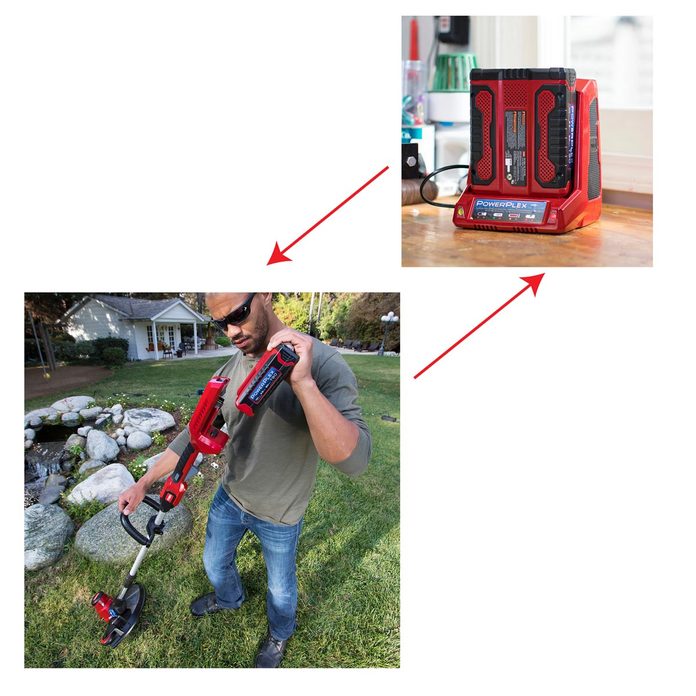
An Additional Battery Boosts Your Productivity
If you’re like most homeowners, you cut the grass, trim and edge with a string trimmer and then clean up the sidewalk and driveway with your leaf blower. If you have a small yard, you can probably do all those jobs with a single battery. But on larger yards, you’ll be far more productive if you buy a second battery. That way you’ll finish the job faster instead of waiting around for the battery to recharge. Here are some tips on caring for lithium ion batteries.
Photo: The Toro Company, Rick Muscoplat

Protect Your Batteries From Extreme Heat and Cold
High heat and freezing temperatures can dramatically reduce battery life and replacement yard tool batteries are expensive! To get maximum life out of your battery, avoid leaving it in a hot garage, in the sun or in your car on a hot day. Store the battery indoors in the winter. Leaving a battery in a discharged state for long periods also reduces its life, so keep it charged. Finally, avoid repeated discharge/recharge cycles in a short period of time. Here are 23 awesome yard tool hacks that will make your life easier!



















